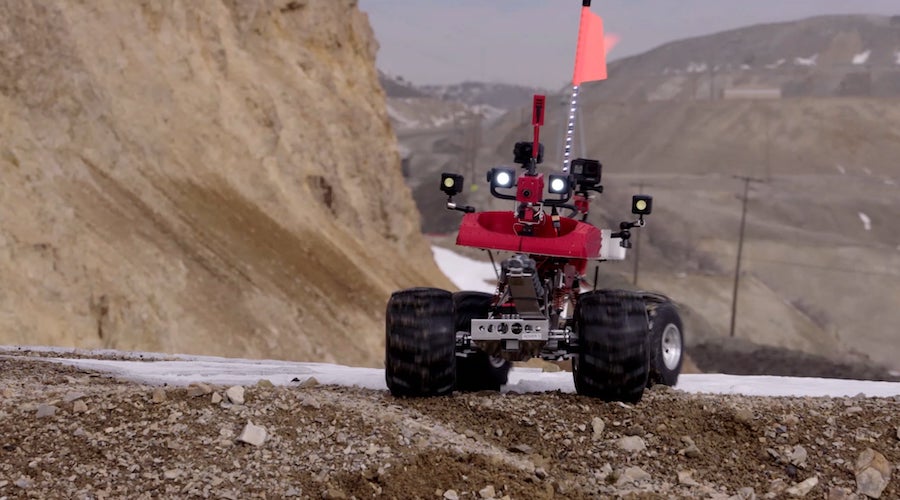What automation, AI, AR, robotics mean for the future of work in mining


Technological advancements like automation, artificial intelligence, augmented reality, and robotics taking place in parallel with the growing attention to environmental, social and governance issues are the factors that will likely have the biggest impact on mine workers and the mining industry in the coming years.
A new report by global crowdsourcing platform Wikistrat and digital transformation service business idoba explores what the future of work and workers in the mining industry may look like and concludes that industry leaders must act now in order to be well-prepared for the changes that are being introduced by inextricably connected ESG issues and technological developments.
The report is based on a simulation the companies ran from August 18 to August 25, 2021. During this period, 28 professionals from within the mining industry and experts from other industries and disciplines collaborated to generate more than 30 scenarios for the future of workers in the mining industry in the upcoming decade, focusing on the impact of three main drivers: Technology, people and society.
In the technology realm, the experts noted that AI is considered to be at the forefront of workplace safety with the increased use of robotics. However, investments in technology regarding data and safeguarding seem to be still lacking, thus slowing down the move into automation.
Nonetheless, AI is already being widely used in improving safety, for example, through the use of sensors, real-time data, and analytics to better understand when changes in factors such as temperature or vibrations can lead to danger. Machine operators and drivers can be warned in advance, thus preventing accidents and injuries.
Another way AI is already impacting the mining industry and helping to create a safer work environment through the use of wearables.
The group consulted mentioned that many mining companies are now monitoring their workers in real-time and are able to identify when a worker is at risk of dehydration, experiencing blood pressure or heart issues, or is working in a fatigued state. Alerts are given or machines are shut down to prevent an incident from occurring.
“The crowd considered the potential of the use of augmented reality/virtual reality and digital wearables to increase productivity,” the review states.
According to the document, another way to increase both productivity and production is through increased use of gamification. At present, such practices are employed to simulate situations that require a new way of working or a new way of approaching a legacy issue.
“Mining has long cycle times and learning through failure can be expensive, dangerous, or not an option at all,” the report reads. “Therefore, by simulating the work situation, they are able to test different ways of working and try new ideas in an environment where safety and failing are not an issue.”
For the experts consulted by Wikistrat and idoba, the trend toward automation in the mining industry is likely to continue, with the requisite technology being developed rapidly.
In their view, the next phase of this will focus on maintenance of mines – as well as operation – becoming automated, posing the possibility of what they referred to as the “man-less” mine. This should lead to cost reductions and improved productivity, while at the same time making mines safer and friendlier toward the natural environment.
The downside of this trend is that it make take a while to become widespread. The experts believe that the industry is not particularly well-prepared for this development because the fully automated mine will require companies to ‘rethink the whole process,’ while the cost of such technologies may be a limiting factor for small and medium mines.
“It was reported in August that autonomous drill rigs controlled from 50km away had come online at a copper-molybdenum mine in Chile after an automation process at the mine began in 2016. In Australia, two mines run by Rio Tinto began moving all of their iron ore using fully remote-controlled trucks in 2015. These developments reflect the advances predicted by the experts, but also demonstrate that there is a significant way to go in reaching the stage of fully man-less mines,” the dossier states.
In addition to time-consuming development and costs, the experts pointed out that the reduced need for labour is likely to prompt disputes, which means that mitigation strategies for the reduced need for human labour need to be developed.
The perspective of the experts polled is that industry leaders seem to be unprepared for what will happen when operator-type jobs will disappear as equipment becomes autonomous.
“As good jobs are lost, there is likely to be backlash for mining companies, particularly in those communities heavily reliant on the industry,” the report reads. “Companies must preempt these issues and devise strategies to mitigate such backlashes, including potentially retraining employees to ensure skills are congruent with future trends and more related to equipment diagnostics.”
When it comes to environmental issues, the leaders consulted said the focus on ESG will continue to evolve and become more important for all mining. They think technology will help to create transparency in the true environmental cost of production as well as provide innovative ways to improve the current impacts of mining on the environment.
In their view, this path is already being walked by many companies that are focusing on how technology can significantly impact ESG. These firms have developed strategies to reduce waste and limit their environmental footprint through technological choices.
“We’re now at a stage where there’s increased acceptance of the impacts of climate change,” Grant Pretorius, associate director at Sandpit Innovation and one of the people consulted, said. “There’s also increased recognition of the urgency for change. We’ve seen that said in the recent IPCC report that was released. As a result, we’ve seen that society and shareholders are applying even more pressure on businesses to demonstrate clear plans and actions particular to decarbonize. The race for zero carbon is on.”
Comments